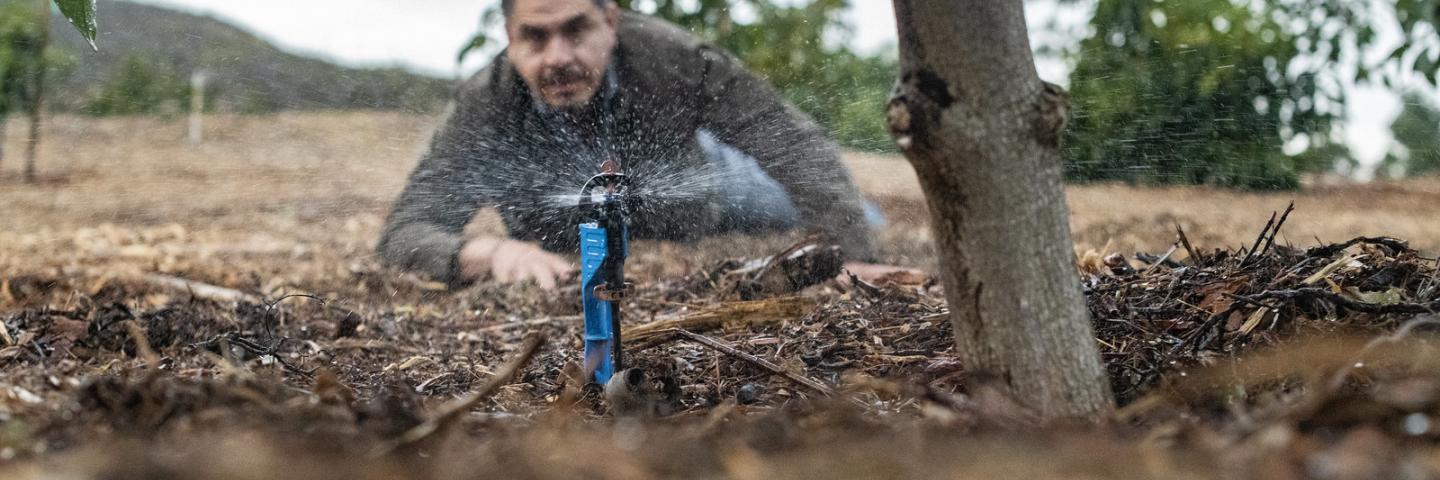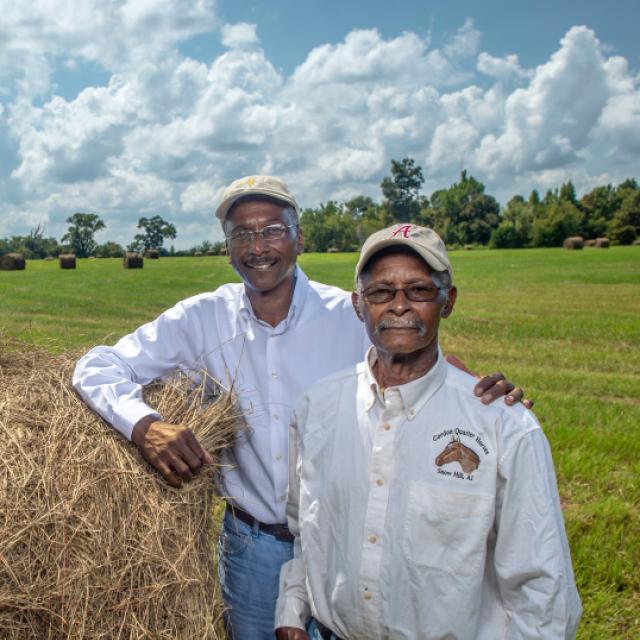
Success Story


NRCS’s EQIP WaterSMART Initiative (WSI) is a collaboration with the Bureau of Reclamation to coordinate investments in priority areas for improving water conservation and drought resilience.
Managing water resources in the American West can be challenging. Drought, aging infrastructure, and environmental requirements can strain existing resources. Through NRCS’s EQIP WaterSMART Initiative (WSI), we collaborate with the Bureau of Reclamation to coordinate investments in priority areas for improving our cumulative impact in water conservation and drought resilience.
NRCS and Reclamation have been coordinating EQIP and WaterSMART investments since a pilot by California NRCS in 2011.
For Fiscal Year 2026, NRCS selected 11 new priority areas and is continuing to offer EQIP funding through the WSI in 26 prior approved areas across 12 states and one tribal area.


Read about the funded projects in WaterSMART Initiative Priority Areas.
Reclamation makes their WaterSMART programs available across the Western US and other areas to help states, tribes, and local entities plan for and implement projects that increase water supply by providing funds to modernize existing infrastructure and otherwise build drought resilience.
NRCS uses EQIP WaterSmart funds to complement Reclamation WaterSMART funded projects by helping eligible farmers and ranchers make improvements that align with the paired Reclamation WaterSMART project.
Eligible farmers and ranchers with operations in a selected priority area will be automatically ranked in the EQIP-WSI targeted fund pool when they apply for EQIP funding.
Through this initiative NRCS provides eligible EQIP applicants with the additional resources and tools needed to manage soil moisture, improve irrigation water use efficiency in crop and pasture lands, and protect irrigation water sources from depletion.
In addition, EQIP funding also helps farmers and ranchers improve soil health; reduce soil erosion, sediment, nutrient, and pathogen loss in fields; protect crop health and productivity; and make using equipment, facilities, and agricultural operations more efficient.
By coordinating NRCS’s EQIP and Reclamation’s WaterSMART investments, this federal collaboration works to ensure that water users conserve this vital resource for use during droughts or use by others in the community needing it for clean drinking water or energy, industry, management of wetlands, streams, rivers, and lakes, and other uses. This collaboration is a priority of the National Drought Resilience Partnership.
With the success of the pilot effort in California from 2011 to 2015, multi-state coordination followed. Between 2016 and 2020, NRCS and Reclamation coordinated to fund complementary investments in 10 different states. The agencies worked together to document and publicize the successes of their collaborative results and coordinated efforts.
NRCS continues to work with partners and producers to address unique challenges faced by agriculture and communities across the West through implementing multi-year funding projects for achieving specific goals. EQIP-WSI activities are planned for each targeted priority area based on how well they complement the activities of a specific Reclamation funded project.
Read more about the Initiatives' outcomes and impacts in our progress report:

Contact: Dan Dostie, Conservation Initiatives Coordinator, WaterSMART Initiative, 202.807.9714
daniel.dostie@usda.gov
Contact your local service center to start your application.
Do you farm or ranch and want to make improvements to the land that you own or lease?
Natural Resources Conservation Service offers technical and financial assistance to help farmers, ranchers and forest landowners.

To get started with NRCS, we recommend you stop by your local NRCS field office. We’ll discuss your vision for your land.
NRCS provides landowners with free technical assistance, or advice, for their land. Common technical assistance includes: resource assessment, practice design and resource monitoring. Your conservation planner will help you determine if financial assistance is right for you.
We’ll walk you through the application process. To get started on applying for financial assistance, we’ll work with you:
Once complete, we’ll work with you on the application, or CPA 1200.
Applications for most programs are accepted on a continuous basis, but they’re considered for funding in different ranking periods. Be sure to ask your local NRCS district conservationist about the deadline for the ranking period to ensure you turn in your application in time.
As part of the application process, we’ll check to see if you are eligible. To do this, you’ll need to bring:
If you don’t have a farm number, you can get one from USDA’s Farm Service Agency. Typically, the local FSA office is located in the same building as the local NRCS office. You only need a farm number if you’re interested in financial assistance.
NRCS will take a look at the applications and rank them according to local resource concerns, the amount of conservation benefits the work will provide and the needs of applicants. View Application Ranking Dates by State.
If you’re selected, you can choose whether to sign the contract for the work to be done.
Once you sign the contract, you’ll be provided standards and specifications for completing the practice or practices, and then you will have a specified amount of time to implement. Once the work is implemented and inspected, you’ll be paid the rate of compensation for the work if it meets NRCS standards and specifications.